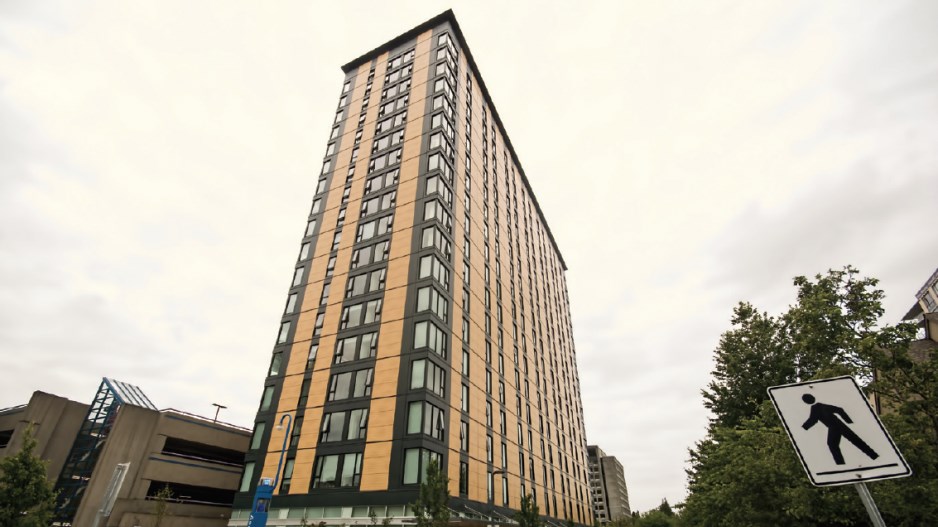Vancouver residents don’t normally see logging trucks rumbling down Howe Street, so they can be forgiven for thinking forestry is a rural B.C. pursuit that doesn’t really affect them.
In fact, forestry accounts for 15% of B.C.’s economic activity, and roughly 40% of the jobs the industry supports are in Vancouver and the Lower Mainland, according to a 2019 economic analysis commissioned by the Council of Forest Industries (COFI).
In total, the industry contributes $13 billion annually to B.C.’s GDP. For regions like the Interior, Vancouver Island, the Kootenays and northern B.C., forestry remains a primary economic pillar – a pillar that has been chiselled down and gnawed away at for the last two decades by insects, wildfires, environmental activism, American protectionism, high operating costs and red tape.
“There isn’t a community in the greater half of the province that isn’t directly impacted by this sector,” Lyn Hall, mayor of Prince George, said last week at the BC Natural Resources Forum.
“Here in Prince George, this sector is one of our main pillars. And here in downtown Vancouver, the forest sector has an impact on what you do. You may not see it, but it’s there.”
Lisa Dominato, a Vancouver city councillor, said the forest industry spends close to $1 billion in Vancouver annually through 500 suppliers.
“When you look at that supply chain, that ranges from engineering services to food services, catering, the Port of Vancouver, consultants, communications, manufacturing. Much of that is happening down here in Vancouver and in Metro Vancouver, and I’m not so sure that we realize that.”
She added that local governments see the value of supporting B.C.’s forestry sector, while also addressing housing shortages and climate change by supporting businesses like the construction of tall wood buildings, which uses mass timber products instead of steel and concrete.
She pointed out the City of Vancouver last year eased height restrictions for tall wood buildings, increasing the limits to 12 storeys from six.
Throughout the COVID-19 pandemic, forestry and other resource industries have kept thousands of British Columbians working, while thousands lost jobs in hospitality and tourism.
“Coming out of COVID, I’ve said many times, that it’s going to be municipalities in the natural resource sector that really drive us to restart the economy,” Hall said.
As timber availability continues to shrink in B.C. and dimensional lumber mills and pulp and paper mills close for good, the sector is being forced to do more with less. This has resulted in the development of higher value-added manufacturing, like cross laminated timber (CLT) manufacturing, as well as wood pellet plants, which export pellets as a renewable fuel alternative to coal.
Forestry companies are also improving efficiency through new technologies, like the drones that Vancouver’s FYBR Inc. provides for aerial mapping and inventory.
Applications include assessing timber inventories, mapping areas affected by fires and pests, and monitoring pulp and pellet mills. FYBR Inc. president Michael Wilcox said the company now provides drone inventory service for 50 mills across North America.
Citing satellite and Lidar remote sensing as examples, he said the technology now used in precision agriculture to improve crop yields is something the forestry sector will adopt.
“It’s an example of where things are going,” Wilcox said.
While technology and innovation can help the industry become more efficient, foresters invariably meet resistance on environmental and social-licence grounds. The increasing involvement of First Nations in the sector helps address some of those issues.
A growing number of First Nations don’t just work in forestry, they own logging companies, tenures and wood lots.
The Homalco First Nation in Campbell River, for example, employs 30 people in its logging operations, which help provide financial support to 25 post-secondary students.
Kelsie Robinson is one of them. The 26-year-old Homalco band councillor learned the ropes of the forestry industry by working as a summer student for Interfor Corp. (TSX:IFP), one of the Homalco First Nation’s business partners.
The Homalco are now developing a forestry tenure company.
Robinson said one of the biggest benefits of the Homalco’s forestry business is the funding it provides to put its members through university.
“We get some funding dollars [from government] from this year to year, but it’s not enough to cover the entire scope of our students,” he said. “So we have to come up with that money on our own, and forestry is a good alternative for us to get extra funding dollars for our students to go to post-secondary.”




